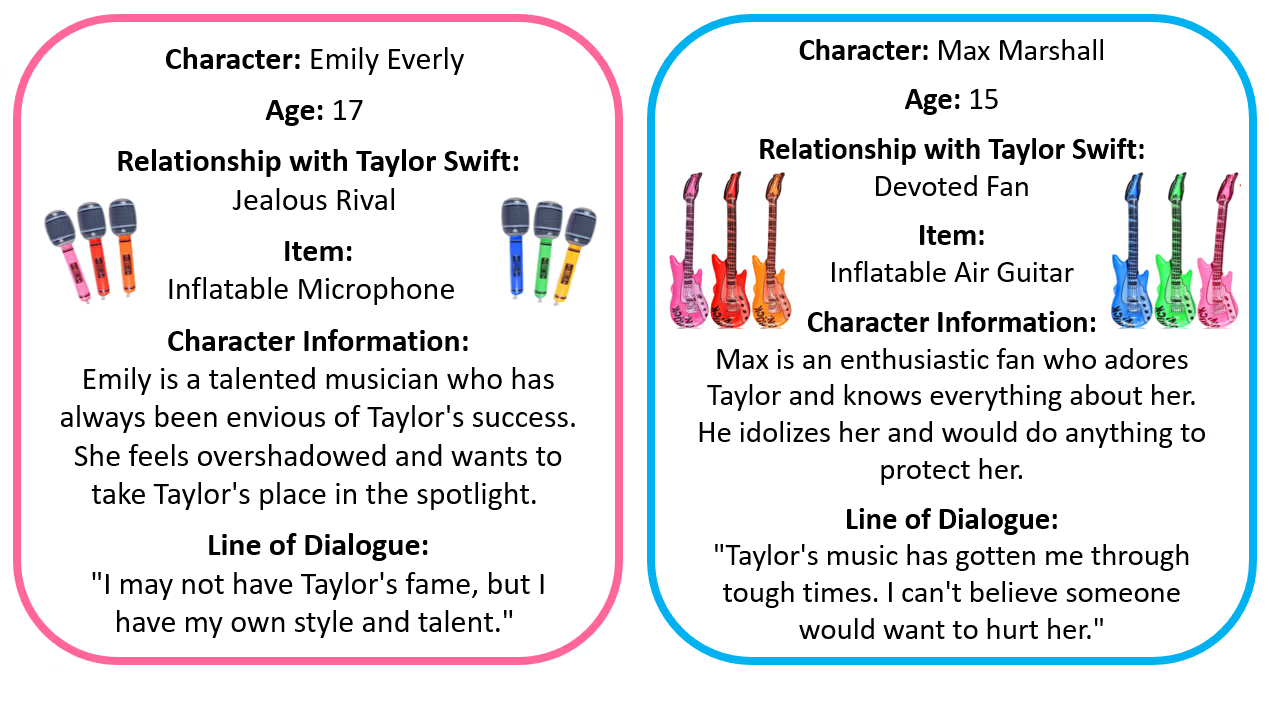The Performing Arts team, decided to venture into using ChatGPT for creating an immersive classroom experience. The idea was to establish a murder mystery scenario, rooted in the fictional death of popular musician Taylor Swift. Here's how they utilised AI:
Objective: To create a classroom activity that would involve role-playing and problem-solving, wrapped in an engaging storyline.
Character Generation: ChatGPT was fed with the basics: they needed six characters, and six specific items to be part of the plot.
Script and Help Cards: Initially, the AI generated a full-fledged script revealing the murderer at the end. However, the team decided that improvisation would add more value. So instead, they used the generated lines as 'help cards' to assist students in developing their characters and dialogues.
Teachers Instructions: AI also penned down a comprehensive guide for teachers on how to facilitate the activity, set up the crime scene, and engage with the students effectively.
Execution: On the day of the activity, items were laid out on a table, and the crime scene was set. Students used the help cards for role-playing and improvising the unfolding drama.
The scenario in this case study is genuine and based upon real events and data, however its narration has been crafted by AI to uphold a standardised and clear format for readers.
Key Learning
This creative application of AI in performing arts education shows the potential for using technology in fostering creativity,improvisational skills, and narrative construction.
It also illustrates how educators can customise AI outputs to suit their pedagogical needs while maintaining an element of spontaneity and student agency in the learning process.
Risks
While highly creative, there are some risks involved.
The generated content could potentially veer into sensitive or inappropriate territory if not carefully reviewed.
Over-reliance on AI, which could dilute the creative input from teachers and students.



